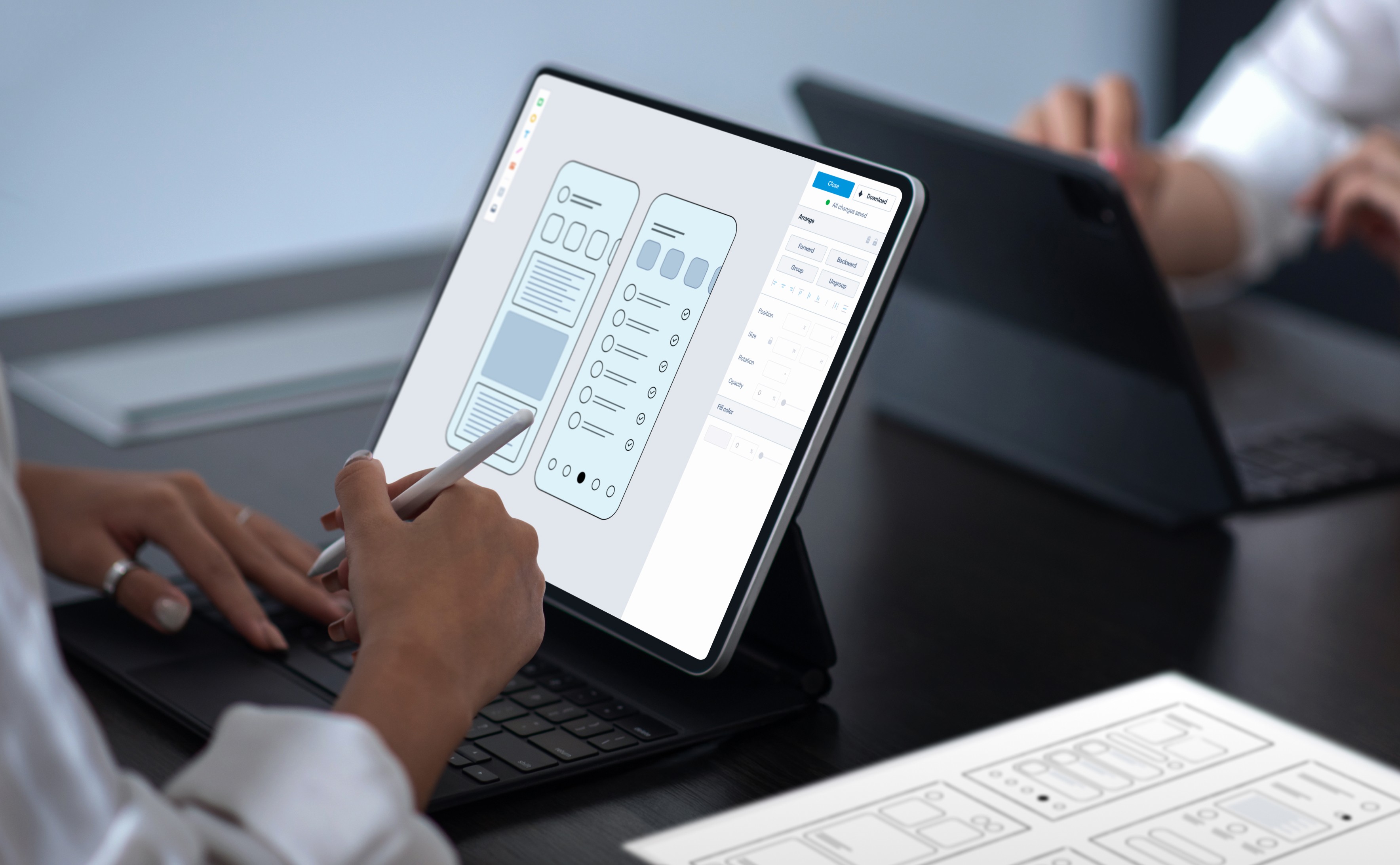Composable Commerce in 2025: A Mainstream Solution for the Future of Retail

Composable commerce has emerged as a flexible, adaptable, and scalable approach in the e-commerce industry. Primarily focused on DTC and B2C brands, composable commerce now offers a great appeal for B2B brands looking to modernize the online business presence. Various businesses have begun their journey with the adoption of composability and modular commerce, knowingly or unknowingly with its surge and widespread acceptance in the ecommerce marketplace.
Based on a March 2023 study, about 72% of U.S. retailers were already using composable commerce in their business, which is quite interesting. Let’s consider a retailer who prepares for increased traffic during a peak sales period. The business has a monolithic package accustomed to solutions from a single vendor. However, the time is short, and the chances of improving the platform stability are low, as the on-site team needs to add multiple new items regularly.
Instead, how about the case when the company is not connected to a single vendor and adapts to various technologies for the business process? This offers scalability, helps add new payment options, and improves customer experience without impacting the overall buying experience. It is all about incorporating flexibility into the dynamic IT and business environment and fulfilling the changing customers’ needs.
Composable commerce combines the existing technology elements with novel technologies, bringing together the business and technical teams to ‘compose’ the brand-driven experiences. Instead of being confined to a vendor-specific solution, composable commerce paves the way for retailers to unify high-end products, vendors, and cloud services to develop custom solutions. In this blog, let’s understand how composable commerce improves the in-store shopping experience and redefines the future of retail commerce.
What is Composable Commerce?
In the world of e-commerce technology, commerce suites were once considered paramount. These suites incorporated different commerce-related functions into unified software systems. Certain platforms offered native integrations with systems such as ERP (Enterprise Resource Planning), CRM (Customer Relationship Management), WMS (Warehouse Management System), PLM (Product Lifecycle Management), and CMS (Content Management System), while others depended on middleware or third-party plugins to improve functionality.
Composable commerce is a business-oriented and modular approach that helps enterprises choose relevant solutions and customize tech stacks to align with complicated business needs. Every solution can be assembled to serve a set of business objectives, termed ‘Packaged Business Capabilities’. Composable architecture helps you choose the preferred technologies to cater to each business requirement, which can then be assembled into a custom tech stack.
Let’s understand the core tenets of composable commerce:
- Modular: Enables independent deployment and interchangeability of every component of the system.
- Open: Allows seamless integration of applications with other applications in the system, without vendor lock-in.
- Flexible: Ability to create unique commerce experiences custom-tailored to business needs with the unique stack.
- Business-centric: Enables merchants to cost-effectively and promptly respond to dynamic business requirements.
Evolution of Packaged Solutions and Platforms
Since 2020, composable commerce has seen its evolution with packaged business solutions catering to every aspect of the digital experience — be it CMS, search, PIM (Product Information Management), Order Management Systems (OMS), or marketplaces. Businesses no longer require building complex and customized solutions from scratch. The current marketplace is rich with Packaged Business Capabilities (PBC) that manage everything and could be integrated into a scalable commerce architecture, offering freedom for the brands to choose the right tools for their unique requirements.
In parallel, even the platforms conventionally considered ‘all-in-one’ have sought to be API-driven, flexible, and work seamlessly.
Platforms like Salesforce, Shopify, and others have evolved by providing more modular solutions offering ease of integration with specialized tools. While Salesforce provides a Composable Storefront, Shopify’s Hydrogen/Oxygen frameworks primarily concentrate on headless capabilities instead of full-fledged composability.
Salesforce Composable storefronts are examples of how the platforms adapt to a composable future. Shopify Hydrogen/Oxygen frameworks rely on headless commerce capabilities and adopt the elements of a composable approach. This gives businesses the capability to build highly flexible, fast, and custom digital experiences with reliable backend operations.
The evolution of these platforms has helped brands to undertake a composable strategy, minimizing the risks involved with early adoption. System integrators are now offering project accelerators and packaged starter kits to ease the process of implementation, helping brands focus on providing a high-end customer experience and eliminating technical integration complexities.
Headless Frontends as the New Standard
The adoption of headless frontends has been a major shift in e-commerce, helping businesses decouple user experience from the backend systems. Headless frontends are core enablers of composable commerce, but they don’t inherently turn a system into a fully composable one.
Headless architecture is the standard way of providing quick, easy-to-manage, and highly customizable user experiences. Decoupling backend and frontend helps businesses optimize digital experiences seamlessly without any backend hindrances.
Many core commerce platforms have helped to steer this adoption:
- BigCommerce launched ‘Catalyst’, which empowers business users to take care of front-end experiences with no need for a heavy developer.
- Commercetools ‘Frontend’ is a powerful solution that builds dynamic headless frontends.
- Salesforce offers Composable Storefront and PWA Kit, delivering tools for businesses to build quick app-like experiences for various devices.
- VTEX with ‘FastStore’, enables businesses to customize the headless starter to improve efficiency and speed.
While the above platforms offer modular and API-bound solutions, businesses should integrate multiple tools to gain composable commerce.
With headless frontends in the mainstream, brands can use these solutions to provide high-end customer experiences, improve agility, and ensure complete control over their ecommerce storefronts. However, businesses that aim at true composable commerce need to adopt a modular backend and integrate independent services, aligning with their particular operational requirements. This helps to ensure high flexibility, scalability, and adaptability in the ecommerce marketplace.
However, to completely hold on to composable commerce, businesses should leverage a modular backend and integrate separate services, aligning with their specific requirements.
Glossier is a well-known beauty company that initially adopted a headless commerce architecture for an effortless customer experience. Their front end was built with React and Next.js whereas the backend functioned on Shopify Plus, GraphQL APIs, and Contentful (headless CMS) for dynamic content fetching. Headless commerce with composable elements enables quicker page loads, consistent omnichannel experiences, and customized shopping.
Curious how a headless frontend can transform your store?
Let’s discussLoading...
Composable vs. Traditional Commerce
| Feature | Traditional Commerce | Composable Commerce |
|---|---|---|
| Architecture | Monolithic, tightly integrated. | Modular, loosely coupled components. |
| Flexibility | Limited: Changes demand modifying the entire system. | High: Can add, remove, or modify the modules independently. |
| Technology Stack | Single language and dependencies. | Multiple languages and technologies can be used. |
| Scalability | The entire system must scale together. | Individual modules scale independently. |
| Cost Efficiency | Pays for unused features in an all-in-one package. | Pay only for necessary components. |
| Customization | One-size-fits-all approach. | Tailored experience with customizable modules. |
MACH Architecture
To find if a technology is a composable solution, referring to an industry tech MACH architecture could help. A developer community built the MACH alliance in 2020, with the vision of assisting enterprises to refine modern technologies and cultivate open technology environments.
According to a study, 79% of IT leaders are interested in incorporating more MACH principles into their technology stack. They are rooted in four core principles: Microservices-based, API-first, Cloud native, and Headless, constituting MACH.
Microservices-based: With these foundational blocks of your technology stack, you can foster a decoupled and decentralized strategy to fulfill specific business needs.
API-First: Every commerce functionality is linked and API-accessible. This enables systems to be integrated easily and offers an ease of communication among them.
Cloud-Native: Utilises the cloud for high performance, speed, and security. This offers a reliable and prompt customer experience.
Headless: Facilitates decoupling of the front-end presentation layer from the back-end commerce engine.
E-commerce has been adopting a monolithic approach for many decades. However, the digital transformation has made a tremendous shift in e-commerce, with MACH architecture, enabling the sites to be highly flexible, scalable, and modular.
Benefits of Composable Commerce
Composable commerce has been breaking down the monolithic barriers of conventional systems by fostering efficiency, growth, and innovation. This has enabled businesses to build customer-focused journeys and achieve scalable results. Let’s delve into the significant advantages that composable commerce can bring to your e-commerce businesses.
Flexibility & Agility
Rather than depending on a single vendor to fulfill all your business requirements, composable commerce lets businesses opt for the best vendors to create a highly functional tech stack. Businesses thereby enjoy the flexibility to customize the technology stack — be it a shopping cart, checkout, or CRM.
Nike has used both headless and modular commerce strategies of composable commerce to boost customer experience. This has helped the brand to enable prompt updates and high-end omnichannel personalization with backend stability.
In-Depth Personalisation in Customer Experience
With composable commerce, you can enjoy the capability to interchange and deploy modules and enjoy the freedom to provide a high-end shopping experience. Your team can build a unique e-commerce experience customized to the client's preferences so that you don’t have to rely on legacy technologies or monolithic systems.
Sephora aligns with the composable commerce principles and enables AI-specific personalization and custom product recommendations helping customers gain tailored beauty recommendations both in-store and online, making the purchase experience exceptional.
Innovation & Scalability
As business evolves, the modular technology stack will expand with the change. Composable commerce means that your commerce components like CMS, search, payment gateways, etc. can be never locked into a typical architecture or vendor, instead, they remain flexible and interchangeable. If a business needs an upgrade/replacement of a component in the future, they can make it without disturbing the whole system.
Tesla’s DTC (Direct-to-Consumer) model uses modular digital strategies and elements of composable commerce to offer scalable e-commerce storefronts and custom car configurations across the markets worldwide.
Cost-Effectiveness & Efficiency
Composable commerce architecture lets you opt for the best solutions that suit your specific business requirements, meaning less time and resources spent on unwanted technologies. However, you need additional expertise and resources to manage multiple integrations/vendors. One such example is Dollar Shave Club, which uses composable commerce for inventory optimization, reduces operational expenses, and drives customer engagement, ensuring a smoother shopping experience.
Enhanced Integration Capabilities
With the Composable commerce solution, the integration capabilities, i.e., the capability of connecting and coordinating different tools, applications, and services in the e-commerce environment becomes easier. It thus helps to customize commerce experiences with high adaptability, scalability, and flexibility.
Best Buy is one of the composable commerce examples, integrating third-party solutions like real-time inventory tracking, AI chatbots, loyalty programs, etc; thus promising a completely connected shopping experience.
Obtaining Omnichannel Consistency
Composable commerce helps with a consistent experience across every customer touchpoint. Different from the conventional monolithic stack, technologies have come up like Metaverse, with people wishing to transact through social channels. It has become essential to consistently show up as a brand across all the different platforms.
With composable commerce omnichannel capabilities, your business can integrate modular solutions customized to various customer touchpoints. However, it needs strategic system integration and data centralization, to achieve a complete omnichannel synchronization.
Target, the major U.S. retailer, builds high-end omnichannel experiences, helping customers purchase online, pick up in-store, and get same-day delivery. They adopt elements of composable commerce to improve cross-channel consistency for their business.
Struggling to deliver a seamless omnichannel experience?
Reach out to usLoading...
Challenges of Composable Commerce
While there are many advantages of adopting a composable commerce approach for your e-commerce business, you should be prepared for certain challenges it can create such as:
Need to manage multiple vendors
Managing multiple vendors is complex in composable commerce. This is because the businesses should coordinate various contracts, integrations, and support structures from different providers, adding challenges.
Demands complex digital maturity levels
Composable commerce is a sophisticated business model that demands a digitally mature organization. It requires cross-functional collaboration and high-end developer expertise.
Investing in infrastructure and monitoring tools
Moving to a composable commerce architecture might change the tools and infrastructure required to monitor different microservices. Learn about the changes required and factor them into the overall ownership costs and build relationships with partners who can assist with your evolving needs.
Implementing DIY control panels
A complete headless experience or pure microservices demands that merchants build a holistic user interface above the other components. Since everything resides in different systems, tasks made easier by an out-of-the-box platform become complex to manage.
How to Choose the Right Composable Commerce Platform?
Flexibility of SaaS Solution
With the flexible framework, your team can design the best experiences and ensure smooth third-party functionality integration without the risks involved in cookie-cutter ecommerce templates. You should also know the architecture types your vendors can offer support with.
Partner Ecosystem
You should find a platform that holds an ecosystem of partners to enable ease of integration. Nevertheless, a platform that offers tools for business users and developers is essential. You should also consider the digital awareness of your organization. Choose a vendor that aligns with your team’s technical capabilities.
Accelerators & Integration
Relying on the prebuilt components and integration of the platform is essential to significantly minimize the overall ownership costs, build costs, and custom code.
Web Hosting
Knowing if hosting is incorporated in a composable commerce solution is necessary. The hosting fees could change with the change in traffic and website features. Hence, it could be difficult to know the type of budget you should allot. However, the help of a partner for website hosting can help reduce costs.
Technical Support
You should know whether the composable vendor supports only their APIs or the entire architecture. It is important to define a process around the support and management upfront, for clarity on what the internal team is responsible for, and what belongs to the scope of your composable partner.
Uptime & Scalability
In e-commerce terms, site speed and availability play a crucial role. This is particularly during peak traffic moments such as sales and holidays. A few moments of website downtime during high traffic can cost a lot of your annual revenue. Ensure your platform partner has assured uptime and scalability.
Bottom Line
In the ecommerce industry, composable commerce has picked up its velocity to be mainstream. The composable approach allows businesses to be future-specific and more agile, making it a strategic necessity. E-commerce businesses looking to remain competitive in 2025 should ensure effective adaptation, personalization, and innovation in composable commerce to ensure rapid growth and development.
If you’re hunting for the best composable commerce services and need help with e-commerce solutions that support composable commerce strategies with additional integrations, like Shopify, WooCommerce, Magento, Adobe Commerce, and Salesforce, a reliable ecommerce development company can be of help. WAC has an accomplished team of e-commerce development and consulting experts who can help you with the best services and solutions in effectively using the various ecommerce platforms, helping you keep your storefronts highly competitive. Whether you need full-scale support or want to hire dedicated eCommerce developers, we’re here to help you move faster and smarter. To learn more about the e-commerce services WAC offers, let’s connect today!
Want to unlock the benefits of composable commerce?
Let's talkLoading...
- E-Commerce Statistics 2025: Key Trends, Growth Insights & Global Shopping Behavior
- Top Gen Z Shopping Trends Shaping eCommerce in 2025
- Adobe Commerce vs Commercetools: Choosing the Right eCommerce Platform for Scalable Success
- E-commerce Trends That Are Powering Online Retail Forward In 2025
- Headless vs. Modular Commerce: Deciding the Best Fit For Your Business
Discover Digital Transformation
Please feel free to share your thoughts and we can discuss it over a cup of tea.










